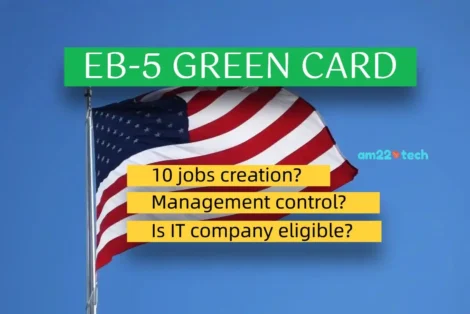|
Listen to this article
|
USCIS allows H1B holders to work at multiple places if they have explicitly applied for a ‘concurrent H1B‘.
Concurrent H1B is different than two separate H1B approvals which you normally have in case you get the H1B transfer approved along with the extension.
What is Concurrent H1B?
Concurrent H1B means that one or more employers employ an H-1B worker at the same time.
USCIS allows you to work on multiple jobs if you have approved ‘CONCURRENT‘ H1Bs.
This can be understood as:
- Primary H1B (This H1B is not required to know about secondary employer)
- Secondary H1B (This H1B i-129 application form should have explicit mention of primary H1B employer)
Example:
A Software Engineer working with Employer A’s H1B full-time can also work as a system consultant for Employer B.
FAQ
You can work with multiple employers on H1B even when the jobs are in completely different fields.
The expertise has to be proved with the same level of documentation as used for the primary H1B application.
The second employment also should be eligible for an H1B visa’s specialty occupation criteria.
You have to find an employer who can sponsor you and file a ‘concurrent’ H1B for you.
As an individual, you cannot apply it directly with USCIS.
You should mention the primary H1B with full-time employment on DS 160 form for visa stamping.
You can start working for the second employer on the USCIS receipt.
There is no need to wait for USCIS approval.
There is no limit on the number of hours you can work using concurrent H1B.
Both primary and secondary H1B can work for 40 hours a week separately.
Yes, it is legally possible to have two full-time concurrent H1Bs and work on two full-time jobs from your home.
But, the chances are low for a second full-time H1B approval unless USCIS is satisfied that you can work 80 hours per week.
The Concurrent H1B is also required to be a specialty occupation.
It must meet all other requirements of a regular H1B petition too like an employer-employee relationship, concrete project information, and client letters.
USCIS does not explicitly send information about second employer B’s concurrent H1B to primary H1B (first employer A).
You are also under no obligation to inform your primary H1B employer A about employer B.
On the other hand, Employer B has to be informed about Employer A’s H1B. This is because Employer B has to specifically mention it in the H1B application that it is a ‘CONCURRENT‘ H1B.
There is no official limit on how many Concurrent H1Bs you can hold simultaneously.
But you should be careful with the total number of hours per week that you plan to work.
USCIS may not approve the concurrent H1B if they think that it is not practically possible to work as per your claims.
You do not need to apply for a “second stamping” for your concurrent H1B job.
It is sufficient that you have one valid H1B visa “stamp” in your passport to re-enter the USA if you travel outside.
You should carry the following as proof though:
2nd concurrent H1B’s USCIS i797 Approval Notice, 3 most recent pay stubs for each H1B job, and an employment verification letter by each employer.
The concurrent H1B filing fees are the same as a standard H1B application. Premium processing is available too.
You can hold L1 and H1B work visas at the same time but can only use one of them at a time to work in the USA.
You cannot use both at the same to do multiple jobs.
You can have both an H4 EAD card and an H1B at the same time but can only use one of them at a time for your employment in the USA.
H4 EAD can only be used if your i94 shows your status as H4.
You cannot have more than one status at one time in the USA.
I140 processing is not affected by multiple H1Bs.
You cannot file concurrent H1B applications at the time of the lottery.
A lottery application means that you need to go through the H1B quota at least once.
Once you have got the H1B lottery selection, then you can file another secondary H1B as a concurrent H1 B once you are in the USA.



